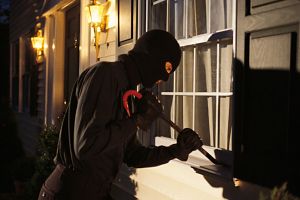 Windows can be a very vulnerable part of a building, often seen as “soft targets” by vandals, criminals and terrorists alike, impacting on both people’s safety and the protection of property.
Windows can be a very vulnerable part of a building, often seen as “soft targets” by vandals, criminals and terrorists alike, impacting on both people’s safety and the protection of property.
The UK has a vast array of prominent and iconic buildings, particularly in city centres; with a multitude of uses including hotels, government, museums, offices, universities, clubs and, of course, residential, attracting people in large numbers to live, work, study and socialise.
Electronic security will warn but not resist so physical security measures should be an important part of any plan for protection.
Glass is easily broken by an intruder prepared to use force and offers little resistance to attack. It will also be shattered by a bomb exploding more than 100M away and flying shards will maim and kill.
Founded in 1966 and a Royal Warrant Holder since 2004, Selectaglaze is the UK’s leading designer, manufacturer and installer of secondary glazing systems.
A solution to the glass problem is found with Selectaglaze’s secure secondary glazing systems where a fully separate window is fitted behind an existing window (room-side) using robust frames, secure locks and strengthened glass. These units can be hinged, sliding or fixed and are subjected to rigorous testing before certification.
The ‘Police Preferred Specification’ under the Secured by Design initiative requires frames to be tested to PAS 24. This test replicates an attempt to force the window or to remove the glass but does not include glass breakage. If resistance to breakage is important, an anti-bandit glass such as 11.5mm laminate should be considered.
Some buildings will need higher levels of protection due to function or occupancy. In these cases both the frame and glass must resist determined attack and products should be rigorously tested against a standard such as LPS 1175 from the Loss Prevention Certification Board. This offers a number of security ratings based on the tools used and the time available. Currently secondary windows are available to level 3 which replicates five minutes of continuous attack over a 20 minute period using tools such as a claw hammer, small axe, battery drill and long crow bar. This is a very severe test and one that only a small number of bar sets or grilles will resist. Secure secondary glazing provides the protection discreetly with minimal visual intrusion.
Secondary window frames and locks can be designed to absorb the significant pressures arising from a bomb blast and laminated glass with its integral sheet of plastic (pvb) material will stretch and hold the glass together safely.
Protection levels will depend on the risks to the building and potential distance from a bomb. Relatively slim sections glazed with 6.8mm laminate glass will survive at 45 metres from a typical vehicle bomb but heavier frames and glass are needed as the distance shortens. High profile buildings may require protection at 25M and sometimes at 15M.
Selectaglaze’s frames are designed to fit discretely and sympathetically in contemporary or period buildings. Listed building consents are usually granted. Added benefits include significant levels of sound insulation, which is highly desirable in noisy locations and enhanced thermal insulation that will improve a buildings energy performance, thus saving on fuel costs.
Selectaglaze won the 2013 Security Industry E-Magazine’s “Blast Mitigation Product Provider of the Year Award”. Selectaglaze’s Chairman, Meredith Childerstone commented: “It is very pleasing to receive sector recognition in this way…It is imperative for businesses and residential properties alike to provide a safe, quiet and comfortable environment for the occupants. And, of course, our secondary glazing systems bring additional advantages such as enhanced energy performance and reduced ingress of dirt and dust.”
Although London and the south of England is the company’s predominant marketplace, Selectaglaze and its approved regional agents, have embarked on successful projects all over the UK. Selectaglaze recently updated its Security guidance literature, entitled “Protecting your Environment”.
